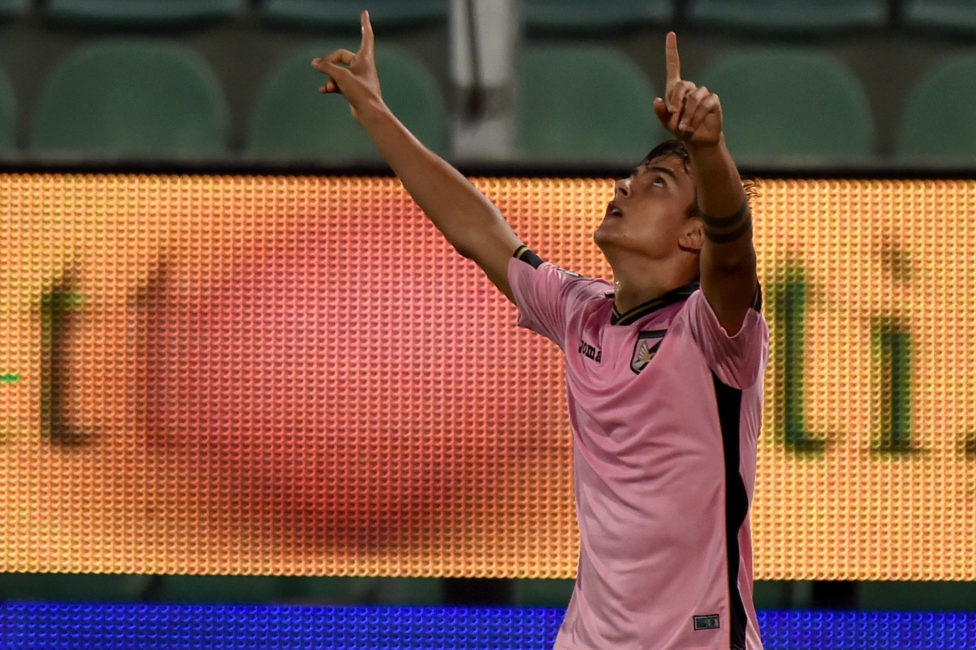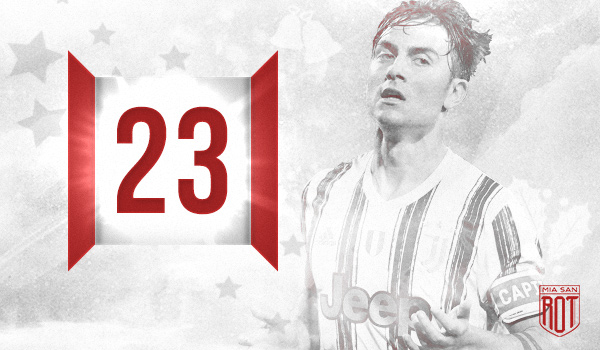The MSR Advent calendar: Our favorite signings that never happened: Door 23 – Paulo Dybala
It is difficult to determine at which point in time Dybala was closest to joining FC Bayern. In the transfer speculation message board of our colleagues at transfermarkt.de, the first rumour appeared in December 2015 when the then 23-year-old had only been playing for Juventus for six months. The latest rumour can be found some 800 entries further on in April 2020. For this article, however, we will play through a transfer in the summer of 2015, when Dybala was about to leave Palermo and eventually went to Turin for €40m.
The situation of the player
After three years at US Palermo, Paulo Dybala was ready to take the next step in his career. In the recently concluded 2014/15 season, he had seen his breakthrough with 13 goals and 10 assists for the Sicilians, who, spurred on by his performances, finished their first season after promotion in eleventh place.
The young Dybala stood out for two things in particular: His insanely strong left foot and his impressive ball control. While the former made him a danger in any situation near the penalty area, the latter allowed him to bring about these very situations. Especially in his last Palermo season, he showed his qualities as a dribbler, seemingly cutting through the supposedly impenetrable catenaccios of the Italian league like a warm knife through butter. His tremendous finishing meant he was always good for a goal even from set pieces.
At Palermo, Dybala often acted as a second, somewhat withdrawn striker alongside his compatriot Franco Vazquez. He liked to initiate attacks by dropping off into the half-spaces before turning playmaker in the final third when he received the ball.
The situation at the club
Did FC Bayern really need Paulo Dybala in the summer of 2015? The honest answer is: probably not. And yet I have been wishing for the transfer of the versatile Argentine for many years.
The team entered its third – and, as we know in retrospect, last – year under head coach Pep Guardiola. Lewandowski was outstanding as a striker. The number 10 role was usually assumed by Thomas Müller, while Mario Götze, who had been signed as a great talent, failed to live up to his promise, notwithstanding his goal in the World Cup final. Out wide, Ribéry and Robben, the two club legends who were still able to conjure up the odd moment of magic, were ageing and increasingly afflicted with injury.

(Image: Tullio M. Puglia/Getty Images)
Nevertheless, the goal was clear: In the third year of Guardiola’s reign, the team was expected to finally climb the Eiger North face of European club football, the Champions League, once again. To achieve this, the team had been strengthened with, among others, the Chilean warrior Arturo Vidal, who at first appeared to be anything but a Guardiola player type. But the successful Spanish coach had in the meantime significantly adapted his style to suit the club and the demand of the Bundesliga.
The ‘what if’ outlook
A potential transfer of Dybala at this time would have been exciting, however, mainly because of the options it would have given Guardiola. At first glance, the Argentine did not fit into Bayern’s system, especially because the number 9 and 10 positions were already taken. And yet Pep would have found a good solution for him.
Especially in the 15/16 season, Guardiola often used a 4-1-4-1 system with a clear focus on offensive penetration. Here Dybala could have shone as a second attacking midfielder in the inside-right half-space. Alongside phantom Müller, who is simultaneously everywhere and nowhere on the pitch and thus drives his opponents to despair, Dybala would have been the key creative player in the center with an outstanding finish to boot. This would have taken some of the burden of building the play off the shoulders of Robben and Ribéry.
Especially the link-up play on the right side with Robben, Lahm and the central midfielder would have been a feast for the eyes. Here Dybala would have benefited from his special sense for open spaces, which would have made him a perfect fit for Guardiola’s polygonal approach to build-up play. Opposing defences would have found it difficult to defend this combination of concentrated footballing intelligence and goal scoring ability.
The potential long term effects of a Dybala transfer are also worth considering. His transfer would almost certainly have prevented Coman’s move to the club at the Isar. The Frenchman would thus in all likelihood have grown into one of the best wingers in Europe at Juventus Turin. Dybala would also probably have prevented the signing of James, as both types of players, for all their differences, are too similar in their style of play.
Similar to the Colombian, Dybala would have had troubles finding a place for himself in the team after the departure of Guardiola. Neither Ancelotti nor Kovac used the 4-1-4-1 system a great deal. He would probably have been moved out to the right-wing in the long term, but there he would have been deprived of his greatest strengths. In the number 8 position in central offensive midfield, Dybala would have been far too offensive and may have jeopardised defensive stability in both Ancelotti’s and Kovac’s preferred setups.
However, I believe that with his young age the Argentine would have developed better than the somewhat older James. Greater self-confidence and a certain familiarity with the team also speak for Dybala. And who knows, maybe he could even have done the impossible and displaced Thomas Müller.
Tomorrow, on Christmas Eve, our series ends with a midfielder who, barely a year older than Dybala, should forever remain our author’s dream…





